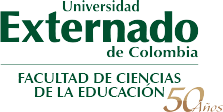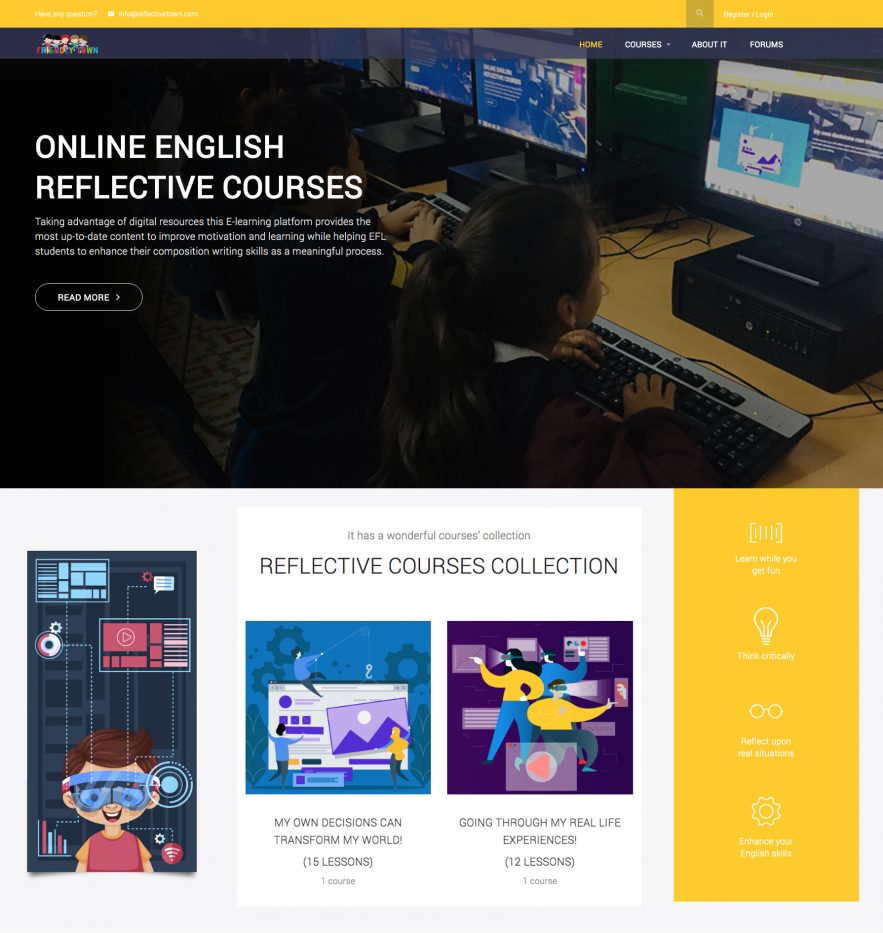18 de julio de 2019
A Teacher-Designed E-Learning Platform with Flip Short Stories for Enhancing Motivation, Composition Writing, and Reflection Upon Personal, Social, School, and Family Real-Life Conflicts
Zuly Tatiana Díaz López
This article addresses the way digital sources and technology can contribute to generating not only a learning environment of English as a Foreign Language but also, an opportunity to practice, interact, and reflect on real-life dilemmas to enhance students’ motivation and composition writing.
Teachers are asked to oversee and make decisions about what is relevant when developing teaching-learning processes by considering our role intellectuals, agents of change, and critical pedagogy transformers of society (Freire, 2006; Giroux, 2008; Núñez & Téllez, 2009; Núñez, Téllez & Castellanos, 2013; Perez & Gimeno, 1992; Quiceno, 2002). On account of the fact that we must tackle the complex challenges ahead, as we cannot ignore that we are in an era in which digital content is one of the fastest growing areas and that teaching has evolved over the years, “I decided to create an E-learning platform which addresses my students’ learning needs to improve not only their language learning process and use but also my teaching practice” (Díaz, 2019, p. 2). A digital learning resource is both “an artifact and a semiotic tool with a bigger potential than traditional textbooks” (MacDonald, 2008, p. 1). Thus, technology benefits learners by the fact that they can address multiple learning styles by being innovative with a lot of potential for growth in teaching and learning.
On the other hand, we need to make students’ writing a conscious, objective, logical, and factual process by including and exploring the strategies needed to achieve better writing processes as writing is also a way of interacting and an effective means to express thoughts, feelings, beliefs, and interpretations. Harmer (2010) purported that “writing gives them more ‘thinking time’ than they get when they attempt spontaneous conversation. This allows them more opportunity for language processing – that is thinking about the language – whether they are involved in study or activation” (p. 112). Correspondingly, writing plays an important role in students’ learning as it fosters communication, develops thinking skills, and gives the opportunity to reflect on thoughts, feelings, and beliefs. In addition, short stories engaged students in the learning process as they are “rememberable, entertaining [and] deal with human-like experience [being] authentic and credible source of knowledge. In so doing, stories invite active meaning making” (Rossiter, 2002, p. 1). To this respect, I designed two courses in the E-learning platform “reflectivetown” that included five lessons each one (vocabulary, reading, listening, speaking, and writing). The first one “my own decisions can transform my world!” which entails personal and social dilemmas they have experienced making them reflect on what they can do in those situations and the effects they can have. The second one “going through my real-life experiences” which some school and family dilemmas were taken to be reflected and analyzed to find some possible resolutions.
Learners could practice all language skills through some interactive and likable activities which they enjoyed a lot. Also, they had the possibility to share their ideas by discussing and writing short stories about their personal, social, school or family real-life experiences and turned them into flip short stories that promoted a meaningful and enjoyable climate for students to learn English, having them interested, motivated and making them explore more about their cultural context. As well as this, students could recognize the essential elements of a narrative text (title, setting, characters, conflict, and resolution) in the short stories presented and applied them when writing their own stories.
Finally, to promote interculturality among learners, they were engaged in active learning, gained insight into specific aspects about how other cultures resolve conflicts by becoming more aware of the diversity within these cultures and developing their ability to think critically and make decisions autonomously.
To conclude, innovative, didactic, contextualized digital materials, and the technology itself as the designed E-learning platform, are essential resources that contribute to nurture the way teaching and learning take place in the EFL classroom where students’ creativity, interaction, and written production are combined to engage them in using the language with meaningful communicative purposes by considering the sociocultural universe of their realities.
________________
References
Freire, P. (2006). Pedagogy of the oppressed. New York, NY: Continuum International
Publishing Group.
Giroux, H. (2008). Teoría y resistencia en educación. México: México, D.F. Siglo XXI.
Harmer, J. (2010). How to teach English. Harlow, Essex: Addison Wesley Longman.
Macdonald, A. (2008). Digital learning resources as systemic innovation. (background report, OECD/CERI PROJECT) Iceland University of Education, Iceland.
Núñez, A., & Téllez, M. (2009). ELT materials: the key to fostering effective teaching and learning settings. PROFILE Issues in Teachers’ Professional Development, 11(2), 173-186.
Núñez, A., Téllez, M., & Castellanos, J. (2013). Proposal for the research line materials development and didactics ascribed to the research group: Critical pedagogy and didactics for social transformation. Bogotá, Colombia: Universidad Externado de Colombia.
Pérez, Á., & Gimeno, J. (1992). Understanding and transforming teaching. Madrid, Spain: Morata, 94.
Quiceno, H. (2002). Educación tradicional y pedagogía crítica. Revista Educación y Cultura, (59).
Rossiter, M. (2002). Narrative and stories in adult teaching and learning. Educational
Resources Information Center. Retrieved from http://www.calpro
online.org/eric/docgen.asp?tbl=digests&ID=126


